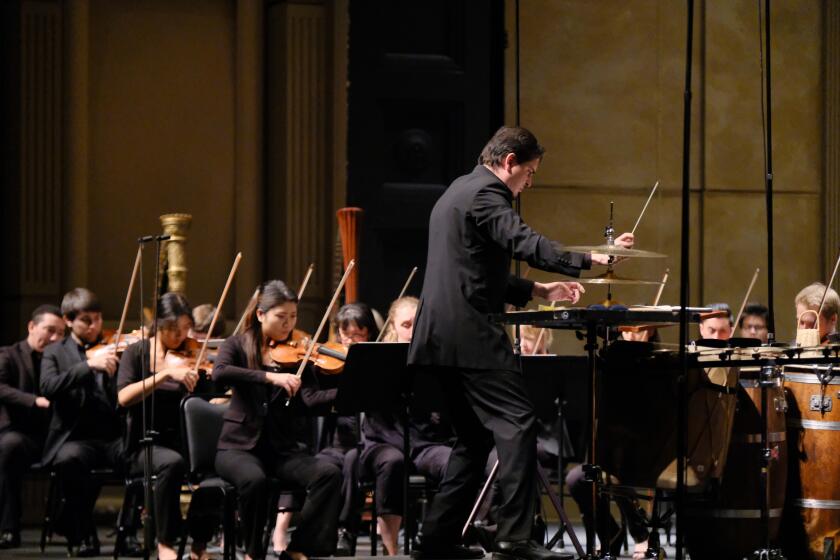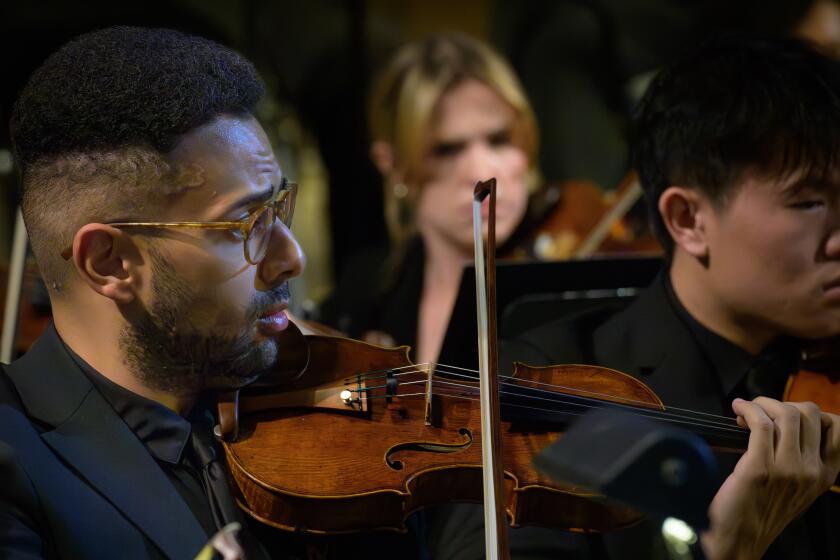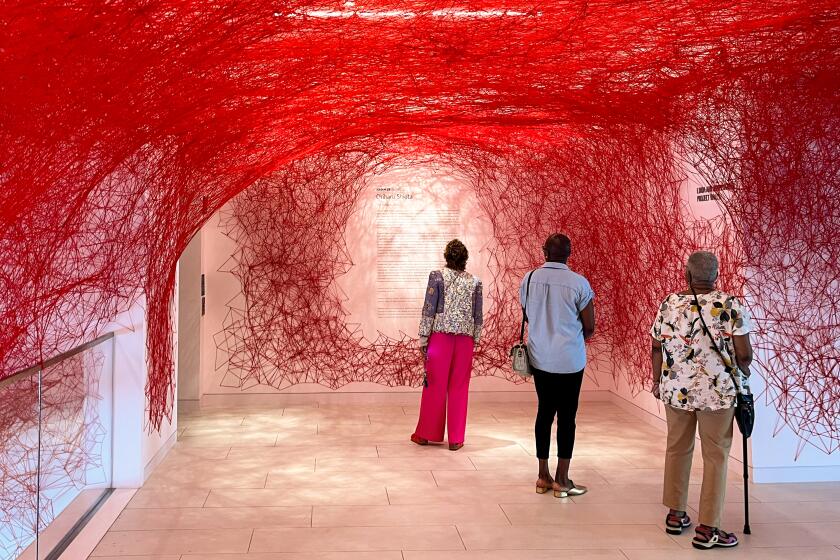ART REVIEW : ‘Manner’ Turns a Lens on Trio of Early Women Photographers
“After the Manner of Women: Photographs by Kasebier, Cunningham and Ulmann,” at the J. Paul Getty Museum, recalls a time when “photographers were trying to decide what photography should be,” according to curator Judith Keller.
During the early 20th Century, proponents of the Pictorialist style were convinced that photographs should look like art, preferably paintings from earlier eras.
While the ethereal, soft-focus style captivated male artists no less prominent than Alfred Stieglitz and Edward Weston, Pictorialism radiated an arguably feminine aesthetic that favored female subjects and attracted women photographers. Prime among them were Gertrude Kasebier, Imogen Cunningham and Doris Ulmann, whose work has been actively collected by the Getty.
When Keller, at the suggestion of Weston Naef, director of the photography department, set out to organize an exhibition of the three artists’ photographs, she decided to sharpen the female focus by restricting the show to images of women. Sifting through about 175 pictures by Ulmann and 60 each by Kasebier and Cunningham, Keller selected 45 images--mostly platinum prints--for a cohesive exhibition.
The overall tone is veiled and genteel, but the three women are distinct and spirited individuals, as we see in portraits of them. Here is Kasebier boldly shooting pool (circa 1900-1905), Cunningham done up in a Javanese costume (1912) and Ulmann being carried across a Kentucky creek on the back of her traveling companion and assistant John Jacob Niles (1933).
Kasebier, a founder of the Photo-Secession movement, is well known as a professional portraitist. But here we see her more private work--intimate views and soft silhouettes of women in delicate interiors, sometimes with their children.
An 1893 portrait of Kasebier’s daughter, Gertrude, depicts the young woman in profile with her lace-covered back to the camera. As Keller notes in the exhibition brochure, the picture echoes the style of 15th-Century Florentine masters. Though the back of the sitter’s head fades into the background, her face and shoulders cut a clean shape, elegantly divided by the curves of her braid and low neckline.
Kasebier often used family and friends as models for her personal work, but she was less interested in likenesses than in universal themes and artistic compositions. A silhouette of a woman kneeling in prayer, possibly taken of Kasebier’s daughter before her wedding, was probably inspired by a 15th-Century Italian painting of a saint. A picture called “Mother and Child Wearing Kimonos” notes the influence of Japanese prints and customs on both painters and photographers around the turn of the century.
Women were Kasebier’s primary subject; not so for Cunningham and Ulmann, who simply included them when it seemed appropriate. In her early work, around 1910, Cunningham was fond of dressing up her statuesque friend, artist Clare Shepard, in theatrically staged pictures. In a work alternately titled “The Dream” or “Nei-san-Koburi” (“Sister Rain”), a misty image of Shepard in a trance-like state--with eyes closed and wearing a kimono--personifies Oriental mysticism, but it also bears the stamp of the Pre-Raphaelite movement in painting.
Other Cunningham photos feature Shepard in a cruciform position and women in gauzy dancer’s garb, a la Isadora Duncan. There is no hint of the Cunningham that was to develop--photography’s grand dame and a fabulous character whose personality obscured her pioneering work in “straight” photographs that could be read as pure abstractions.
Ulmann’s exhibited work (done a decade or so later than that of Kasebier and Cunningham) points to the future of photography. Though she cloaks subjects in a Pictorialist mode, the sitters themselves are hard-working people who live in poverty. Among her ambitious projects that foreshadow Depression-era documentary work are illustrations for “Roll, Jordan, Roll,” Julia Peterkin’s 1933 book about life on a South Carolina plantation and a photographic survey of “American Types,” rather like German photographer August Sander’s contemporary project, “People of the 20th Century.”
The least known of the trio of women, Ulmann was a wealthy New York divorcee who traveled through Appalachia and the American South, recording a backwoods culture that she thought was fast disappearing. Frail but fashionably dressed and well equipped with camera gear, she must have seemed unfathomably strange to the country people she photographed. According to Keller, Ulmann relied on the strength and savvy of Niles, a folklorist from Kentucky, to guide her through foreign territory.
Even if she leaned on a man to get her work done, Ulmann seems to have had a clear idea about portraying women as real, unglamorous people. She was particularly sensitive to older women, allowing them dignity but never romanticizing their mean situations. An usually affecting shot of a young black girl places the youngster at the center of a picture and below some foliage, as if she were a tree trunk. Looking apprehensively over her shoulder, she seems to stand at a shadowy crossroads of strength and vulnerability.
Similar techniques and a concern with photographs as well-crafted objects make these three bodies of work flow together quite seamlessly, but the exhibition actually records a profound change of attitude. Leading to a moment when photographers pushed toward an independent art form, one that need not imitate painting, the photographs also trace the movement from idealized femininity to unflinching realism.
The exhibition continues through Dec. 31. Parking reservations are required to visit the Getty: (213) 458-2003.
More to Read
The biggest entertainment stories
Get our big stories about Hollywood, film, television, music, arts, culture and more right in your inbox as soon as they publish.
You may occasionally receive promotional content from the Los Angeles Times.






